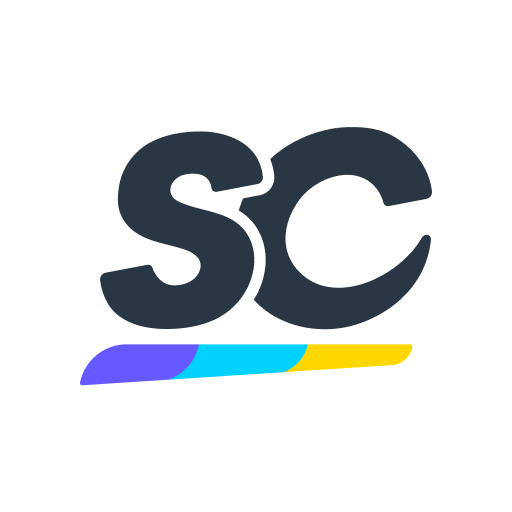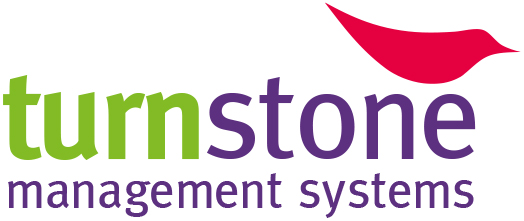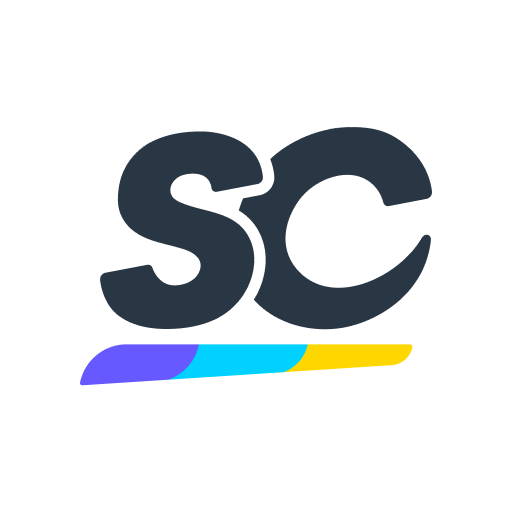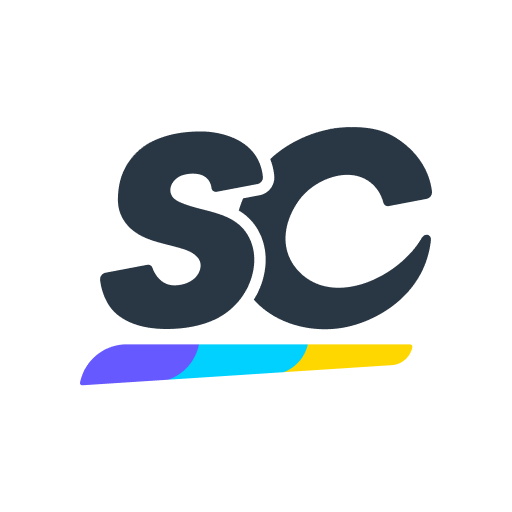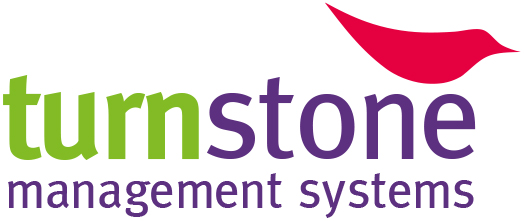Title Page
-
Conducted on
-
Prepared by
-
Location
4. Quality Management System
4.1 General Requirements
4.1.1 Develop a QMS
-
Establish your quality management system (QMS).
-
Document your organization's quality management system.
-
Maintain the effectiveness of your quality management system.
-
Establish your QMS documentation requirements.
-
Identify the documents that regulators expect you to maintain.
-
Identify the medical device regulations that apply to your organization.
-
Identify the roles that medical device regulators expect you to perform.
-
Identify the documents that ISO 13485 expects you to maintain.
-
Identity the procedures that ISO 13485 expects you to document.
-
Identity the activities that ISO 13485 expects you to document.
-
Identity the arrangements that ISO 13485 expects you to document.
-
Identity the requirements that ISO 13485 expects you to document.
4.1.2 Clarify structure
-
Consider the roles that regulators expect you to perform.
-
Determine the processes that your organization's QMS needs.
-
Clarify how QMS processes are applied throughout your organization.
-
Specify how your organization's processes are interconnected.
-
Use a risk based approach to control your organization's QMS processes.
4.1.3 Support processes
-
Support each QMS process.
-
Support QMS process operations.
-
Support QMS process monitoring.
-
Support QMS process measuring.
-
Support QMS process analysis.
-
Support QMS process record keeping.
4.1.4 Manage changes
-
Manage your QMS processes.
-
Comply with ISO 13485 process management requirements.
-
Manage changes to your organization's QMS processes.
-
Comply with regulatory process management requirements.
-
Comply with regulatory change control requirements.
4.1.5 Control outsourcing
-
Monitor outsourced processes that affect product conformity.
-
Control the outsourced processes that affect product conformity.
-
Retain responsibility for processes that affect product conformity.
4.1.6 Validate software
-
Develop procedures to validate and revalidate your QMS software.
-
Develop an approach that is proportionate to the risk that is being taken.
-
Use your procedures to validate and revalidate software applications.
-
Validate computer software applications for their intended use.
-
Validate software whenever its intended use changes (as appropriate).
-
Maintain a record of your software validation and revalidation activities.
4.2 Documentation requirements
4.2.1 General
-
Include all required documents and records.
-
Include the documents and records that regulations require.
-
Include the documents and records that ISO 13485 requires.
-
Include the documents and records that your organization requires.
4.2.2 Quality manual
-
Prepare a quality manual for your QMS.
-
Define the scope of your organization's QMS.
-
Outline the structure of your QMS documentation.
-
Include your QMS procedures or refer to them.
-
Describe how your QMS processes interact.
4.2.3 Medical device file
-
Establish a file for each medical device type or each family of medical devices.
-
Include or reference documents showing that you comply with regulations.
-
Include or reference documents showing that you comply with ISO 13485.
-
Maintain a file for each medical device type or each family of medical devices.
-
Include documents for each medical device type or family of medical devices.
-
Include a description of each medical device type or medical device family.
-
Include procedures for medical device types or medical device families.
-
Include specifications or procedures for medical device types or families.
-
Include records for medical device types or medical device families.
4.2.4 Control documents
-
Establish a procedure to control QMS documents.
-
Document your QMS document control procedure.
-
Implement your QMS document control procedure.
-
Control your organization's QMS documents.
-
Review and approve documents before you issue them.
-
Provide the correct version of documents at points of use.
-
Protect the identity and legibility of your QMS documents.
-
Identify and control the distribution of external QMS documents.
-
Prevent the unintended or inadvertent use of obsolete documents.
-
Preserve obsolete documents for future reference and use.
4.2.5 Control of records
-
Establish records for your organization's QMS.
-
Develop procedures to control QMS records.
-
Document your record control procedures.
-
Implement your record control procedures.
-
Define methods to protect QMS health records.
5. Management Responsibility
5.1 Management commitment
-
Demonstrate your ongoing commitment.
-
Support the development of your QMS.
-
Support the implementation of your QMS.
-
Support the maintenance of your QMS.
5.2 Customer focus
-
Ensure that external requirements are determined.
-
Ensure that external requirements are being met.
5.3 Quality policy
-
Plan your quality policy.
-
Draft your quality policy.
-
Apply your quality policy.
-
Review your quality policy.
5.4 Planning
5.4.1 Quality objectives
-
Establish quality objectives for your organization.
-
Set objectives needed to meet product requirements.
-
Set objectives needed to meet regulatory requirements.
5.4.2 Quality management system planning
-
Plan how you're going to develop your QMS.
-
Plan how you're going to document your QMS.
-
Plan how you're going to structure your QMS.
-
Plan how you're going to manage your QMS.
-
Plan how you're going to monitor your QMS.
-
Plan how you're going to control your QMS.
-
Plan how you're going to implement your QMS.
-
Plan how you're going to maintain your QMS.
5.5 Responsibility, authority, and communication
5.5.1 Responsibility and authority
-
Define QMS responsibilities and authorities.
-
Document QMS responsibilities and authorities.
-
Document how QMS personnel are interrelated.
5.5.2 Management representative
-
Appoint a member of management to oversee your QMS.
-
Give management representative authority and responsibility.
-
Assign authority and responsibility for documenting your QMS.
-
Assign authority and responsibility for reporting to top management.
-
Assign authority and responsibility for promoting corporate awareness.
5.5.3 Internal communication
-
Establish appropriate internal communication processes.
-
Encourage communication about the effectiveness of your QMS.
5.6 Management review
5.6.1 General
-
Establish management review procedures.
-
Schedule your reviews at planned intervals.
-
Review your QMS at planned intervals.
-
Keep a record of management reviews.
5.6.2 Review input
-
Study information about your QMS (inputs).
-
Review previous management reviews.
-
Review the results of previous audits.
-
Review your complaint handling activities.
-
Review monitoring and measurement activities.
-
Review new or revised regulatory requirements.
-
Review previous corrective and preventive actions.
-
Review recommendations for improvement.
-
Review changes that could affect the QMS.
5.6.3 Review output
-
Generate your management review outputs.
-
Generate decisions and actions to improve your QMS.
-
Generate decisions and actions to enhance your products.
-
Generate decisions and actions to deal with regulatory changes.
-
Generate decisions and actions to address relevant resource needs.
-
Establish a record of your management reviews.
6. Resource Management
6.1 Provisional resources
-
Determine the resources that your QMS needs.
-
Provide the resources that your QMS needs.
-
Provide the resources needed to implement your QMS.
-
Provide the resources needed to meet regulatory requirements.
-
Provide the resources needed to meet customer requirements.
6.2 Human resources
-
Identify personnel and examine work that could affect product quality.
-
Establish a process to manage the competence of medical device workers.
-
Use your process to manage the competence of your medical device workers.
-
Select suitable methods for evaluating your training and awareness activities.
-
Maintain records that document the competence of medical device workers.
6.3 Infrastructure
-
Document QMS infrastructure requirements.
-
Provide the infrastructure that your QMS needs.
-
Identify maintenance activities that could affect quality.
-
Maintain the infrastructure that your QMS needs to have.
6.4 Work environment and contamination control
6.4.1 Work environment
-
Identify the work environment needed to meet product requirements.
-
Document your organization's requirements for this work environment.
-
Identify the working conditions that influence the quality of your products.
-
Document your organization's requirements for these working conditions.
-
Document procedures to monitor and control these working conditions.
-
Identify personnel who could affect medical device safety or performance.
-
Identify those who come into contact with products or related environments.
-
Establish health, cleanliness, and clothing requirements for these personnel.
-
Control those who work temporarily under special environmental conditions.
6.4.2 Contamination control
-
Plan how you're going to control products that are or may be contaminated.
-
Plan how you're going to control the contamination of sterile medical devices.
7. Product Realization
7.1 Planning of product realization
-
Plan the processes that are needed to realize products.
-
Develop the processes that you need to realize products.
-
Develop a risk management process for product realization.
-
Plan how you're going to realize each product.
-
Formulate quality objectives for your product.
-
Clarify specific product realization requirements.
-
Generate product realization planning outputs.
-
Establish records of product realization activities.
7.2 Customer-related processes
7.2.1 Determination of requirements related to product
-
Clarify your product requirements.
-
Identify requirements specified by your customers.
-
Identify requirements dictated by your product's intended use.
-
Identify requirements imposed by your regulatory bodies.
-
Identify requirements defined by your organization.
7.2.2 Review of requirements related to product
-
Evaluate product requirements before you accept orders.
-
Review product requirements before you supply products.
-
Verify product requirements before you agree to accept orders.
-
Confirm that product requirements can be met before you proceed.
-
Maintain a record of your product requirement reviews.
7.2.3 Communication
-
Plan arrangements to communicate with customers.
-
Document your customer communication arrangements.
-
Implement your customer communication arrangements.
-
Maintain your customer communication arrangements.
-
Establish arrangements to communicate with regulatory authorities.
-
Use your arrangements to communicate with regulatory authorities.
7.3 Design and development
7.3.1 General
-
Establish procedures for design and development.
-
Document procedures for design and development.
7.3.2 Design and development planning
-
Plan the design and development of your products.
-
Document your product design and development plans.
-
Maintain your design and development planning documents.
-
Control the design and development of your products.
7.3.3 Design and development inputs
-
Determine product design and development inputs.
-
Review your product design and development inputs.
-
Approve your product design and development inputs.
-
Maintain a record of design and development inputs.
7.3.4 Design and development outputs
-
Generate suitable design and development outputs.
-
Verify your product design and development outputs.
-
Approve your product design and development outputs.
-
Maintain records of design and development outputs.
7.3.5 Design and development review
-
Plan your organization's design and development reviews.
-
Perform reviews in accordance with planned arrangements.
-
Maintain records of your design and development reviews.
7.3.6 Design and development verification
-
Plan your design and development verification activities.
-
Document your design and development verification plans.
-
Perform verifications in accordance with planned arrangements.
-
Keep records of your design and development verification activities.
7.3.7 Design and development validation
-
Plan your organization's design and development validation activities.
-
Document your organization's design and development validation plans.
-
Perform validations in accordance with your planned arrangements.
-
Keep records of design and development validation activities.
7.3.8 Design and development transfers
-
Develop procedures to control design and development transfers.
-
Use your procedures to control design and development transfers.
-
Record design and development transfer results and conclusions.
7.3.9 Control of design and development changes
-
Establish procedures to control design and development changes.
-
Use your procedures to control design and development changes.
-
Maintain a record of medical device design and development changes.
7.3.10 Design and development files
-
Maintain a design and development file for each family of medical devices.
-
Include or reference records that document compliance and changes.
7.4 Purchasing
7.4.1 Purchasing process
-
Establish procedures to control product purchases.
-
Establish supplier evaluation and selection criteria.
-
Establish supplier monitoring and re-evaluation plans.
-
Monitor the performance of your organization's suppliers.
-
Take action whenever suppliers fail to meet purchasing requirements.
-
Establish supplier evaluation, selection, and monitoring records.
7.4.2 Purchasing information
-
Plan your organization's product purchases.
-
Review purchase requirements before sharing them.
-
Maintain your organization's purchasing documents and records.
7.4.3 Verification of purchased product
-
Develop methods and activities to verify purchased products.
-
Make arrangements to verify the products you plan to purchase.
-
Verify that your purchased products meet purchase requirements.
-
Consider what to do when changes are made to purchased products.
-
Establish and maintain a record of purchased product verifications.
7.5 Production and service provision
7.5.1 Control medical device production and service provision
-
Plan your production and service provision activities.
-
Carry out production and service provision activities.
-
Monitor production and service provision activities.
-
Control production and service provision activities.
7.5.2 Define requirements for cleanliness or contamination controls
-
for process agents that must be removed from products during manufacture.
-
Identify products that you clean prior to sterilization or use.
-
Document and maintain your cleanliness or contamination control requirements for products that you clean prior to sterilization or use.
-
Identify products that cannot be cleaned prior to sterilization or use.
-
Document and maintain your cleanliness or contamination control requirements for products that can't be cleaned prior to sterilization or use.
-
Identify products supplied non-sterile to be cleaned before sterilization or use.
-
Document and maintain cleanliness or contamination control requirements for products supplied non-sterile to be cleaned before sterilization or use.
-
Identify products that must be clean when used but are supplied non-sterile.
-
Document and maintain cleanliness or contamination control requirements for products that must be clean when used but are supplied non-sterile.
-
Identify process agents that must be removed from product during manufacture.
-
Document and maintain cleanliness or contamination control requirements for process agents that must be removed from products during manufacture.
7.5.3 Specify product installation and verification requirements
-
Establish medical device installation requirements.
-
Document your medical device installation requirements.
-
Establish medical device installation verification requirements.
-
Document your organization's installation verification requirements.
7.5.4 Develop servicing procedures and reference materials
-
Establish medical device servicing procedures and reference materials.
-
Document your medical device servicing procedures and reference materials.
-
Use your procedures and materials to control medical device servicing activities.
-
Maintain a record of your organization's medical device servicing activities.
-
Identify improvement opportunities and servicing complaints.
7.5.5 Maintain a record of sterilization process parameters
-
Establish a record of your organization's sterilization process parameters.
-
Record sterilization process parameters for each batch of medical devices.
7.5.6 Validate processes used for production and service provision
-
Identify processes that generate outputs that are not or cannot be verified by subsequent monitoring and measurement until it's too late.
-
Establish procedures to validate production and service delivery processes and software applications that could affect your products and services.
-
Validate processes and software applications that could generate output deficiencies and could affect your products and services.
7.5.7 Validate processes for sterilization and sterile barrier systems
-
Document procedures used to validate processes for sterilization and sterile barrier systems.
-
Establish procedures used to validate processes for sterilization and sterile barrier systems.
-
Implement procedures used to validate processes for sterilization and sterile barrier systems.
-
Maintain procedures used to validate processes for sterilization and sterile barrier systems.
7.5.8 Preserve product identity throughout product realization
-
Prepare procedures and systems to control the identity of medical devices.
-
Document your organization's product identification systems and procedures.
-
Implement your organization's product identification systems and procedures.
7.5.9 Establish suitable traceability procedures and records
7.5.9.1 Establish suitable product traceability procedures
-
Establish your product traceability procedures.
-
Implement your product traceability procedures.
-
Maintain your product traceability procedures.
7.5.9.2 Establish suitable records for implantable devices
-
Establish your traceability records for implantable medical devices.
-
Expect suppliers of distribution services to have distribution records.
7.5.10 Protect property supplied for medical devices by customers
-
Identify property supplied by customers to be used by medical devices.
-
Verify property supplied by customers to be used by your medical devices.
-
Safeguard property supplied by customers to be used by medical devices.
-
Maintain a record of customer property that is lost, damaged, or unsuitable.
-
Report lost, damaged, or unsuitable customer property to your customers.
7.5.11 Preserve medical device products and components
-
Establish procedures to preserve the conformity of products.
-
Document and maintain your product preservation procedures.
-
Use your procedures to preserve the conformity of products.
-
Prevent medical device damage, alteration, and contamination.
-
Protect products when exposed to hazards and expected conditions.
7.6 Control of monitoring and measuring requirements
-
Identify monitoring and measurement requirements.
-
Select suitable monitoring and measurement equipment.
-
Establish your monitoring and measurement procedures.
-
Prepare your calibration and verification plans and procedures.
-
Protect your organization's monitoring and measurement equipment.
-
Develop monitoring and measurement software validation procedures.
8. Measurement, Analysis, and Improvement
8.1 General
-
Plan monitoring, measurement, and analytical processes.
-
Plan how monitoring methods will be used ensure conformity and effectiveness.
-
Plan how measurement will be used to ensure conformity and effectiveness.
-
Plan how analytics will be used to ensure conformity and effectiveness.
8.2 Monitoring and measurement
8.2.1 Feedback
-
Establish feedback methods and procedures.
-
Examine the information you have gathered.
-
Use your feedback to measure QMS effectiveness.
-
Use your feedback to facilitate risk management.
-
Use your feedback to support improvement processes.
-
Use your feedback to enhance product realization.
8.2.2 Complaint handling
-
Establish your complaint handling procedures.
-
Document your complaint handling procedures.
-
Implement your complaint handling procedures.
-
Maintain your complaint handling procedures.
8.2.3 Reporting and regulatory authorities
-
Establish reporting procedures when regulators expect you to report to them.
-
Document reporting procedures when regulators expect you to report to them.
-
Implement reporting procedures when regulators expect you to report to them.
-
Maintain reporting procedures when regulators expect you to report to them.
8.2.4 Internal audit
-
Establish your organization's internal audit procedure.
-
Plan your organization's internal audit programme.
-
Carry out your internal audits at planned intervals.
-
Maintain a record of audit plans and performance.
-
Eliminate all detected nonconformities and causes.
-
Follow-up on steps taken to resolve nonconformities.
8.2.5 Monitoring and measurement of processes
-
Establish suitable methods to monitor and measure each QMS process.
-
Apply suitable methods to monitor and measure each QMS process.
8.2.6 Monitoring and measurement of product
-
Monitor and measure your organization's product characteristics.
-
Establish a record of product monitoring and measurement activities.
-
Complete all planned arrangements before you release your products.
-
Establish a record of implantable medical device testing and inspection.
8.3 Control of nonconforming product
8.3.1 General
-
Clarify how you intend to prevent unintended product delivery or use.
-
Prevent the unintended delivery or use of your nonconforming products.
-
Establish a record of your organization's nonconforming product activities.
8.3.2 Actions in response to nonconforming product detected before delivery
-
Deal with nonconforming products prior to delivery.
-
Take action to eliminate detected nonconformities.
-
Prevent the product's original intended use or application.
-
Authorize nonconforming product use, release, or acceptance.
8.3.3 Actions in response to nonconforming product detected after delivery
-
Identify nonconforming products after delivery or after use has started.
-
Take action that is appropriate to the effects that have been identified.
-
Establish and maintain a record of the actions that have been taken.
-
Clarify how your advisory notices should be issued and managed.
-
Keep a record of actions taken when advisory notices are issued.
8.3.4 Rework
-
Clarify how product rework should be performed.
-
Clarify how product rework should be verified.
-
Clarify how product rework should be reviewed.
-
Clarify how product rework should be approved.
-
Clarify how product rework should be recorded.
8.4 Analysis of data
-
Plan how you're going to evaluate your QMS.
-
Establish procedures to evaluate your QMS.
-
Use your analytical results to improve your QMS.
8.5 Improvement
8.5.1 Take action to change QMS and products
-
Identify any changes that must be made.
-
Identify changes that maintain QMS suitability, adequacy, and effectiveness.
-
Identify changes needed to ensure medical device safety and performance.
-
Make any changes that must be made.
8.5.2 Take action to correct actual nonconformities
-
-
Document a corrective action procedure.
-
Specify how actual problems will be investigated.
-
Specify how corrective actions will be developed.
-
Specify how corrective actions will be verified.
-
Specify how corrective action will be taken.
-
Specify how corrective action will be reviewed.
-
Implement your corrective action procedure.
-
Maintain records of corrective action taken.
8.5.3 Take action to prevent potential nonconformities
-
Document a preventive action procedure.
-
Specify how potential problems will be investigated.
-
Specify how preventive actions will be developed.
-
Specify how preventive actions will be verified.
-
Specify how preventive action will be taken.
-
Specify how preventive action will be reviewed.
-
Implement your preventive action procedure.
-
Maintain records of preventive action taken.
Completion
-
General comments
-
Name and signature
